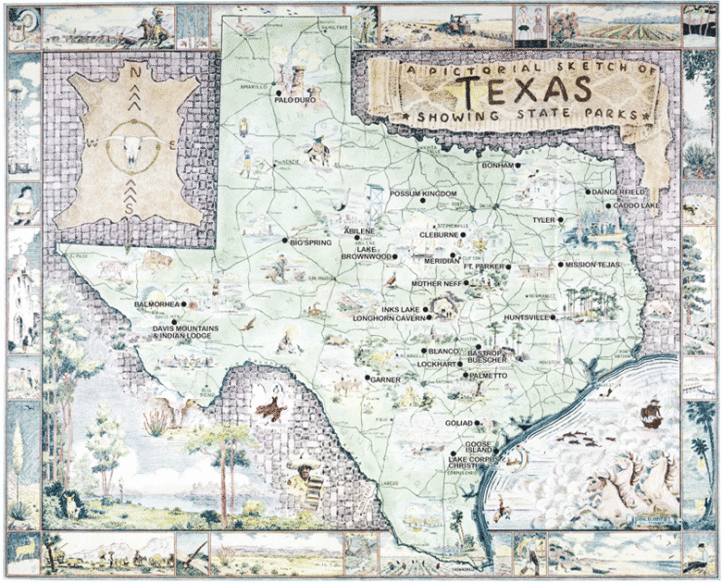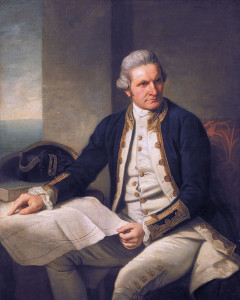Texas History Road Trip
After lots and lots and lots of Texas history curriculum research we have not found anything really engaging. So we are making up our own version. Our favorite way to learn history is through travel and field trips and so we decided that we would road trip through Texas history. We started out with a Texas history timeline and filled in the destinations. Here is our Texas History Road Trip. Enjoy.
Included in this road trip are all of the Texas Parks & Wildlife Department state parks, the 16 National Park Service parks, and Texas’ only UNESCO World Heritage site. Here are some very important links for Texas History:
Texas State Historical Society
Bullock Texas State History Museum – Official state history museum.
Texas State Travel Guide – Order a free travel guide, state map and download the travel app.
I love an app called iMarkers. It has all the historical markers in an interactive map. As we are traveling, we can see what’s coming up and read about it on the go.
MY NOTE: add to Timeline http://texasalmanac.com/topics/history/timeline-texas-history
Native Americans
Before 1500 — Prior to the arrival of the first European explorers, numerous tribes of the Indians of Texas occupied the region between the Rio Grande to the south and the Red River to the north.
Here is a great free resource by TPWD; Learn About Texas Indians.
NATIONAL MONUMENT
Alibates Flint Quarries
Fritch, TX
13,000 years ago this site was already well-known by mammoth hunters as a place to get the best stone for their tools. Centuries passed but the colorful flint found right here in the Texas panhandle never lost its value and usefulness. Visit and gain a sense of how integral this site was to the survival, commerce and culture of the High Plains.
NATIONAL RECREATION AREA
Lake Meredith
Fritch, TX
Within the dry and windswept high plains of the Texas Panhandle lies a hidden oasis, a welcoming haven where wildlife and humans find respite from the dry grasslands above. Through this plain, the Canadian River has cut dramatic 200-foot canyons, or breaks, where humans have eked out a living for over 13,000 years. Lake Meredith now occupies these hidden coves where early humans once roamed.
NATIONAL MONUMENT
Waco Mammoth
Waco, TX
On July 10, 2015, President Barack Obama issued a Presidential Proclamation making the Waco Mammoth Site a new unit of the National Park System. This paleontological site represents the nation’s only recorded discovery of a nursery herd of Columbian mammoths. Visitors can view “in situ” fossils including female mammoths, a bull mammoth, and a camel that lived approximately 67,000 years ago.
Early Exploration and Development
Mid-1519 — Sailing from a base in Jamaica, Alonso Alvarez de Pineda, a Spanish adventurer, was the first known European to explore and map the Texas coastline.
November 1528 — Cabeza de Vaca shipwrecked on what is believed today to be Galveston Island. After trading in the region for some six years, he later explored the Texas interior on his way to Mexico.
1540-1542 — In search of the fabled Seven Cities of Cibola, Francisco Vasquez de Coronado lead an expedition into the present southwestern United States and across northern Texas.
18 February 1685 — Robert Cavelier, Sieur de LaSalle established Fort St. Louis at Matagorda Bay, and thus formed the basis for France’s claim to Texas. Two years later, LaSalle was murdered by his own men.
22 April 1689 — Mexican explorer Alonso de Leon reached Fort St. Louis, and found it abandoned, during an expedition planned to reestablish Spanish presence in Texas.
1716-1789 — Throughout the 18th century, Spain established Catholic missions in Texas, and along with the missions, the towns of San Antonio, Goliad and Nacogdoches.
UNESCO World Heritage Site – San Antonio Missions – http://www.missionsofsanantonio.org
NATIONAL HISTORICAL PARK
San Antonio Missions
San Antonio, TX
After 10,000 years, the people of South Texas found their cultures, their very lives under attack. In the early 1700s Apache raided from the north, deadly diseases traveled from Mexico, and drought lingered. Survival lay in the missions. By entering a mission, they foreswore their traditional life to become Spanish, accepting a new religion and pledging fealty to a distant and unseen king.
8 August 1812 — About 130-men strong, the Gutierrez-Magee Expedition crossed the Sabine from Louisiana in a rebel movement against Spanish rule in Texas.
1817-1820 — Jean Laffite occupied Galveston Island and used it as a base for his smuggling and privateering operation.
3 January 1823 — Stephen F. Austin received a grant from the Mexican government and began colonization in the region of the Brazos River. http://www.tamu.edu/faculty/ccbn/dewitt/adp/history/hispanic_period/tenoxtitlan/austins_colony.html
The George Ranch Historical Park on the John Jones Quarter League
Mid-1824 — The Constitution of 1824 gave Mexico a republican form of government. It failed, however, to define the rights of the states within the republic, including Texas.
6 April 1830–Relations between the Texans and Mexico reached a new low when Mexico forbid further emigration into Texas by settlers from the United States.
26 June 1832–Velasco, TX – The Battle of Velasco resulted in the first casualties in Texas’ relations with Mexico. After several days of fighting, the Mexicans under Domingo de Ugartechea were forced to surrender for lack of ammunition. The battle of Velasco, a prelude to the Texas Revolution and probably the first case of bloodshed in the relations between Texas and Mexico, took place on June 26, 1832. Henry Smith and John Austinqv, in charge of Texans who had gone to Brazoria to secure a cannon for use against the Mexican forces at Anahuac, opposed Domingo de Ugartechea, commander of the Mexican fort at Velasco, who tried to prevent the passage of the vessel carrying the cannon. The Texans numbered between 100 and 150; the number of Mexicans was variously estimated at 91 to 200. Ugartechea and his garrison were forced to surrender when their ammunition was exhausted. Sources differ about the number of casualties, but a conservative estimate suggests that Texan casualties were seven killed and fourteen wounded; three of the fourteen later died of their wounds. The Mexicans had five killed and sixteen wounded. Final terms allowed Ugartechea to surrender with the honors of war and return to Mexico aboard a ship furnished by the colonists. The final surrender took place in camp at the mouth of the Brazos on June 29, 1832, in the form of a document signed by Texas representatives William H. Wharton and William J. Russell, and Mexican representatives Juan Moret and José Rincón, with final approval by Ugartechea and John Austin.
http://www.texasescapes.com/MurrayMontgomeryLoneStarDiary/The-first-shot-may-have-been-second.htm
1832-1833 — The Convention of 1832 and the Convention of 1833 in Texas were triggered by growing dissatisfaction among the settlements with the policies of the government in Mexico City.
Revolution and the Republic
2 October 1835 — Gonzales, TX – Texans repulsed a detachment of Mexican cavalry at the Battle of Gonzales. The revolution began.
9 October 1835 — Goliad, TX – The Goliad Campaign of 1835 ended when George Collingsworth, Ben Milam, and forty-nine other Texans stormed the presidio at Goliad and a small detachment of Mexican defenders.
28 October 1835 — Jim Bowie, James Fannin and 90 Texans defeated 450 Mexicans at the Battle of Concepcion, near San Antonio.
3 November 1835 — The Consultation met to consider options for more autonomous rule for Texas. A document known as the Organic Law outlined the organization and functions of a new Provisional Government.
8 November 1835 — The Grass Fight near San Antonio was won by the Texans under Jim Bowie and Ed Burleson. Instead of silver, however, the Texans gained a worthless bounty of grass.
11 December 1835 — Mexicans under Gen. Cos surrendered San Antonio to the Texans following the Siege of Bexar. Ben Milam was killed during the extended siege.
2 March 1836 — The Texas Declaration of Independence was signed by members of the Convention of 1836. An ad interim government was formed for the newly created Republic of Texas.
6 March 1836 — Texans under Col. William B. Travis were overwhelmed by the Mexican army after a two-week siege at the Battle of the Alamo in San Antonio. The Runaway Scrape began.
10 March 1836 — Sam Houston abandoned Gonzales in a general retreat eastward to avoid the invading Mexican army.
27 March 1836 — James Fannin and nearly 400 Texans were executed by the Mexicans at the Goliad Massacre, under order of Santa Anna.
21 April 1836 — Texans under Sam Houston routed the Mexican forces of Santa Anna at the Battle of San Jacinto. Thus, independence was won in one of the most decisive battles in history.
November 1839 — The Texas Congress first met in Austin, the frontier site selected for the capital of the Republic.
11 August 1840 — The Battle of Plum Creek, near present-day Lockhart, ended the boldest and most penetrating Comanche challenge to the Texas Republic.
June 1841 — The Texan Santa Fe Expedition set out for New Mexico. Near Sante Fe, they were intercepted by Mexican forces and marched 2000 miles to prison in Mexico City.
5 March 1842 –A Mexican force of over 500 men under Rafael Vasquez invaded Texas for the first time since the revolution. They briefly occupied San Antonio, but soon headed back to the Rio Grande.
11 September 1842 — San Antonio was again captured, this time by 1400 Mexican troops under Adrian Woll. Again the Mexicans retreated, but this time with prisoners.
Fall 1842 — Sam Houston authorized Alexander Somervell to lead a retaliatory raid into Mexico. The resulting Somervell Expedition dissolved, however, after briefly taking the border towns of Laredo and Guerreo.
20 December 1842 — Some 300 members of the Somervell force set out to continue raids into Mexico. Ten days and 20 miles later, the ill-fated Mier Expedition surrendered at the Mexican town of Mier.
29 December 1842 — Under orders of Sam Houston, officials arrived in Austin to remove the records of the Republic of Texas to the city of Houston, touching off the bloodless Archives War.
25 March 1843 — Seventeen Texans were executed in what became known as the Black Bean Episode, which resulted from the Mier Expedition, one of several raids by the Texans into Mexico.
27 May 1843 — The Texan’s Snively Expedition reached the Santa Fe Trail, expecting to capture Mexican wagons crossing territory claimed by Texas. The campaign stalled, however, when American troops intervened.
Statehood and Beyond
29 December 1845 — U. S. President James Polk followed through on a campaign platform promising to annex Texas, and signed legislation making Texas the 28th state of the United States.
25 April 1846 — The Mexican-American War ignited as a result of disputes over claims to Texas boundaries. The outcome of the war fixed Texas’ southern boundary at the Rio Grande River.
NATIONAL HISTORICAL PARK
Palo Alto Battlefield
Brownsville, TX
On May 8, 1846, United States and Mexican troops clashed on the prairie of Palo Alto. The battle was the first in a two-year long war that changed the map of North America. Palo Alto Battlefield National Historical Park preserves the site of this notable battle and provides an understanding of the causes, events, and consequences of the U.S.-Mexican War.
25 November 1850 — In a plan to settle boundary disputes and pay her public debt, Texas relinquished about one-third of her territory in the Compromise of 1850, in exchange for $10,000,000 from the United States.
May 1852 — The first Lone Star State Fair in Corpus Christi symbolized a period of relative prosperity in Texas during the 1850’s. Organizer Henry L. Kinney persuaded Dr. Ashbel Smith to be the fair’s manager.
29 April 1856 — Backed by the US military, a shipment of 32 camels arrived at the port of Indianola. The resulting Texas Camel Experiment used the animals to transport supplies over the “Great American Desert.”
1 February 1861 — Texas seceded from the Federal Union following a 171 to 6 vote by the Secession Convention. Governor Sam Houston was one of a small minority opposed to secession.
22 October 1861 — Advance units of the newly formed Brigade of General H. H. Sibley marched westward from San Antonio to claim New Mexico and the American southwest for the Confederacy.
1 January 1863 — After several weeks of Federal occupation of Texas’ most important seaport, the Battle of Galveston restored the island to Texas control for remainder of Civil War.
13 May 1865 — The last land engagement of the Civil War was fought at the Battle of Palmito Ranch in far south Texas, more than a month after Gen. Lee’s surrender at Appomattox, VA.
1866 — The abundance of longhorn cattle in south Texas and the return of Confederate soldiers to a poor reconstruction economy marked the beginning of the era of Texas trail drives to northern markets.
NATIONAL HISTORIC SITE
Fort Davis
Fort Davis, TX
Fort Davis is one of the best surviving examples of an Indian Wars’ frontier military post in the Southwest. From 1854 to 1891, Fort Davis was strategically located to protect emigrants, mail coaches, and freight wagons on the Trans-Pecos portion of the San Antonio-El Paso Road and on the Chihuahua Trail.
30 March 1870 — The United States Congress readmitted Texas into the Union. Reconstruction continued, however, for another four years.
17 January 1874 — Coke-Davis Dispute ended peacefully in Austin as E. J. Davis relinquished the governor’s office. Richard Coke began a democratic party dynasty in Texas that continued unbroken for over 100 years.
4 October 1876 — The opening of the Agricultural and Mechanical College of Texas marked the state’s first venture into public higher education. Tuition totaled $10 per semester.
15 September 1883 — The University of Texas opened its doors in Austin for its inaugural session. First courses were offered in the Academic Department and a Law Department.
16 May 1888 — The dedication of the present state capitol in Austin ended seven years of planning and construction. The building was funded with 3,000,000 acres of land in north Texas.
20 January 1891 — Based on a campaign platform calling for the regulation of railroads and big business, James Hogg took office as the first native-born governor of Texas.
10 January 1901 — The discovery of “black gold” at the Spindletop oil field near Beaumont launched Texas into a century of oil exploration, electronics, and manned space travel.
NATIONAL HISTORICAL PARK
Lyndon B Johnson
Johnson City, TX
Lyndon B. Johnson National Historical Park tells the story of our 36th President beginning with his ancestors until his final resting place on his beloved LBJ Ranch. This entire “circle of life” gives the visitor a unique perspective into one of America’s most noteworthy citizens by providing the most complete picture of any American president.
READ ALOUD: The Best Town in the World by Byrd Baylor
Live the Perissos Life!
Blessings,




